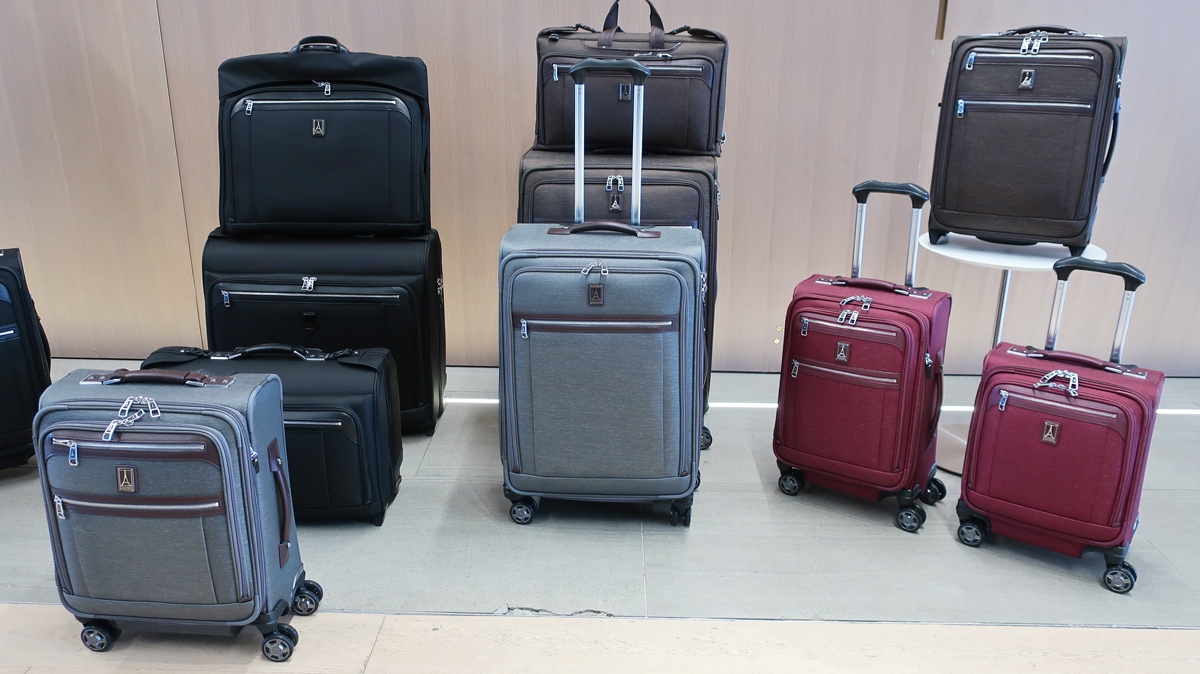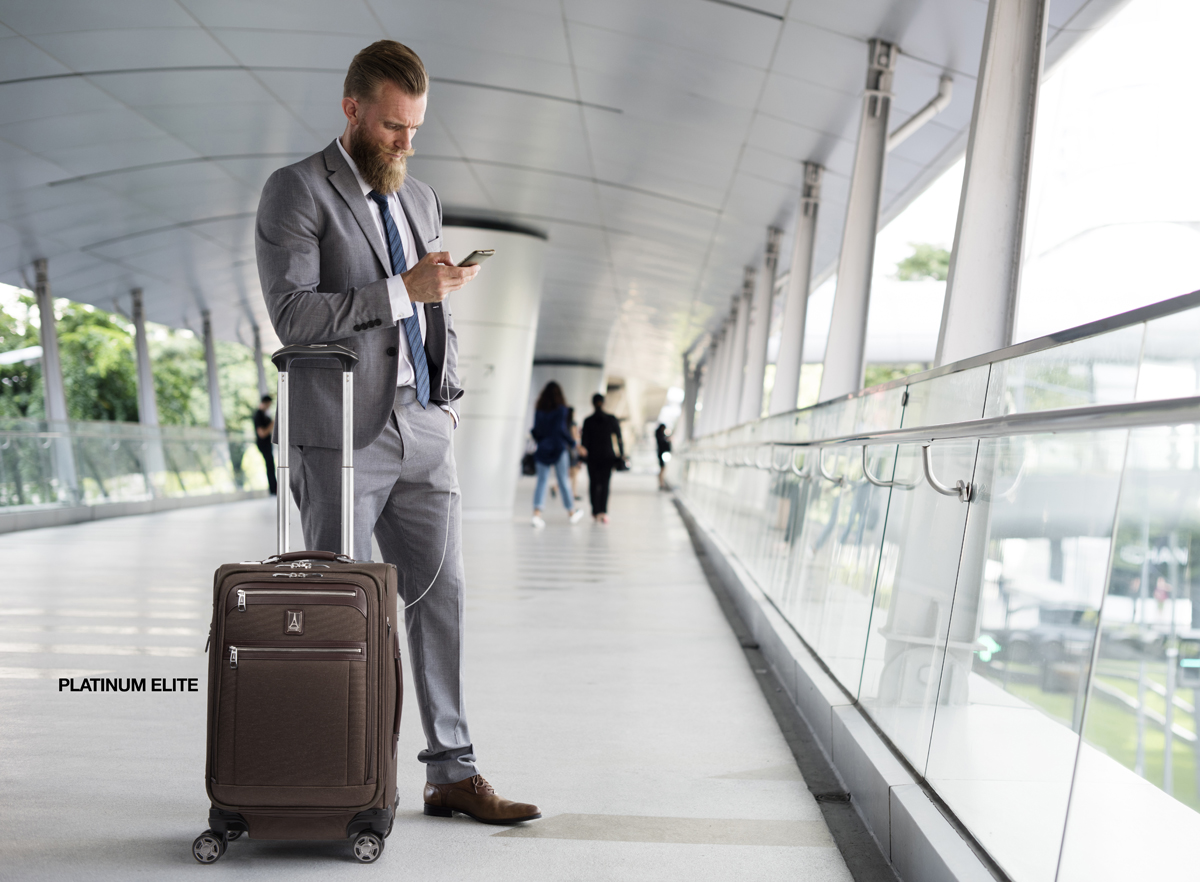
Wallace Immen searches for reliable travel companions.
I finally said farewell forever to two of my closest friends.
They’d been at my side on journeys to the far corners of the globe, through airports big and small, on everything from cruise ships to canoes, always up for another adventure. Sure, they were only suitcases — a roll-aboard that easily slipped into overhead bins and a larger bag to check for long trips — but they were trusty road warriors for over six years.
Now, they were bruised and battered and it was time to shop for new ones from among hundreds of luggage options. I learned a lot in my research:
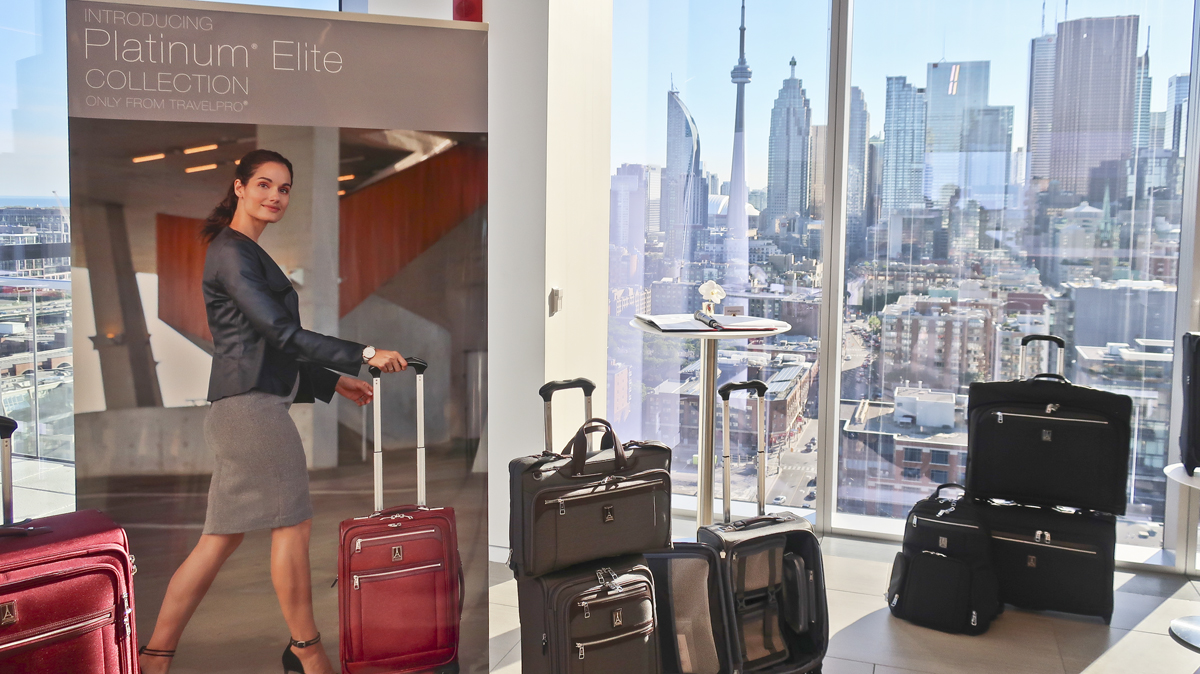
Since I’d had such a good experience with my long-running bags made by Travelpro, I sought out Raymond Durocher, President of Holiday Group, whose lines include Travelpro, NexTech, Swiss Gear, Atlantic and Roots 73.
In his 25 years with the company, he’s seen luggage evolve from luggable to rollable and now to fashionable. “Really the first consideration should always be quality. The last thing you want to have happen on a business trip or vacation is have your luggage break on you. Fabric is important, but you have to make sure that the wheels, handles and zippers are going to last,” he advises.
That’s a lesson I learned the hard way, buying inexpensive bags in the past that looked good in the showroom but were made of inferior materials. On one awkward trip, a hard-sided bag I bought on sale cracked open and clothes were sticking out of it as it appeared on the luggage conveyor.
On the first leg of another extended trip, wheels broke off a cheap but sleek-looking bargain roller bag I’d bought in Chinatown, leaving me dragging the sorry hulk through airports that didn’t have luggage carts. Other suitcases I’ve known have ripped or suffered sudden handle failures mid-trip.
1) So, go hard or soft?
About half of luggage sold these days is rigid, and a large part of its appeal is that hard side composites can come in a multitude of fashion colors and patterns, Durocher says. There are disadvantages. Once you close a clam shell, you’ve got to reopen the whole piece to get at anything and there’s no way to stash things you might need without opening the bag. Soft side luggage generally has storage pockets on the outside. And if properly designed high-tech ballistic nylon can be every bit as protective as a solid case.
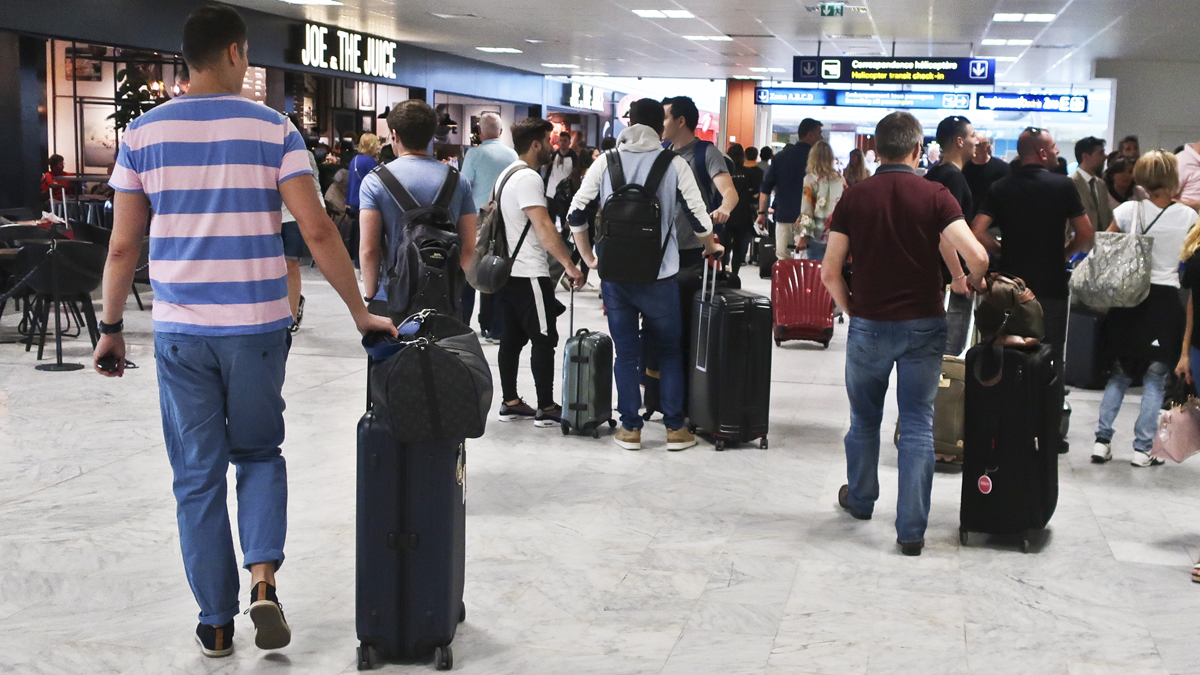
2) Spinners: Pros and cons
Where would we be without wheels? Nearly all bags have them, along with built-in telescoping handles to guide them. And about half of bags sold come with swiveling wheels in each corner. The pros of four-wheelers are that they can be pulled alongside you rather than behind and you can even wrangle two bags with one hand by placing them side by side.
I remain a fan of two-wheelers that you pull behind you because pushing spinners alongside you can be tricky in airport crowds. The spinner wheels also add extra height to the bag, which can mean they don’t fit as easily into airline bins. Many spinner bags I’ve tried also have a tendency to drift and make you feel like you’re walking a dog who has other ideas along the way. Travelpro makes both styles and its four-wheelers have a patented system that uses a series of magnets to align all the wheels in the same angle so they don’t drift.
3) Colors—standing out in a world of black
My previous set by Travelpro was in a handsome money green that readily stood out in crowded carousels of black suitcases. The green is no longer made, but a new range of colors is available. Look for something that’s identifiable, but that won’t show scuffs or dirt too easily.
If you’re committed to black, add a colored tag or ribbon to each bag. For larger checked bags, put a colored tag on every handle if the bag has more than one, making it easier to spot amid the frequently upside-down jumble on the conveyor belt.
And don’t forget to tag your backpack. It, too, may be lost in a sea of identical packs. I once had the harrowing experience of realizing I’d picked up someone else’s black backpack from the security check – and I couldn’t turn back to get mine. Fortunately, in the flow of people moving past me I spotted my own on someone else’s shoulders. We gratefully exchanged our packs, but mine now wears a small but unique tag on its locker loop.
Colors and sizes are proliferating–Photo by Wallace Immen
4) Size matters more than you think
Everyone needs a carry-on: for short trips or trips or when you’re changing planes, you want to have your luggage next to you, Durocher says. If you’re going on a cruise or to a resort for a longer stay or travelling with a family, you’ll want a bigger piece of luggage as well.
You should investigate luggage sized specifically for the destination and airplanes you’ll be flying in. The dimensions of a 21-inch Rollaboard bag work for airlines in the United States and South America. In Canada and Europe the metric dimensions may call for a somewhat smaller profile.
Have juice when there may not be any–courtesy Travelpro
5) Don’t leave home without your charging station
Another thing that’s new for many carry-ons is a wired USB connection for easily linking your phone to your charger bank so you don’t have to search for a charging station at an airport. Be sure the power bank is located so that it can be easily removed if necessary at security.
6) Where’s it all going?
Another big change over the years has been the trend toward style in luggage, Durocher says. And airline weight requirements have also become such an issue that every company has made it a priority to make their luggage lighter. “You don’t want your luggage to represent 50 per cent of the weight you’re allowed to carry or check. It’s a balancing act as to what you can slim down while still being strong. Research is going on all the time.”
The company has labs in Montreal and Boca Raton that do exhaustive drop tests, strength tests and even put cases on treadmills to test wheels and handles. Thanks to stronger and lighter ballistic nylon and frame materials, Travelpro’s new generation Maxlite 5 series has reduced the carry-on‘s weight to 5.4 pounds, from the six pounds of the previous series.
What about luggage that’s self-propelled? “We’re not there yet,” Durocher says. And it may never happen because of strict airline airline weight limits.
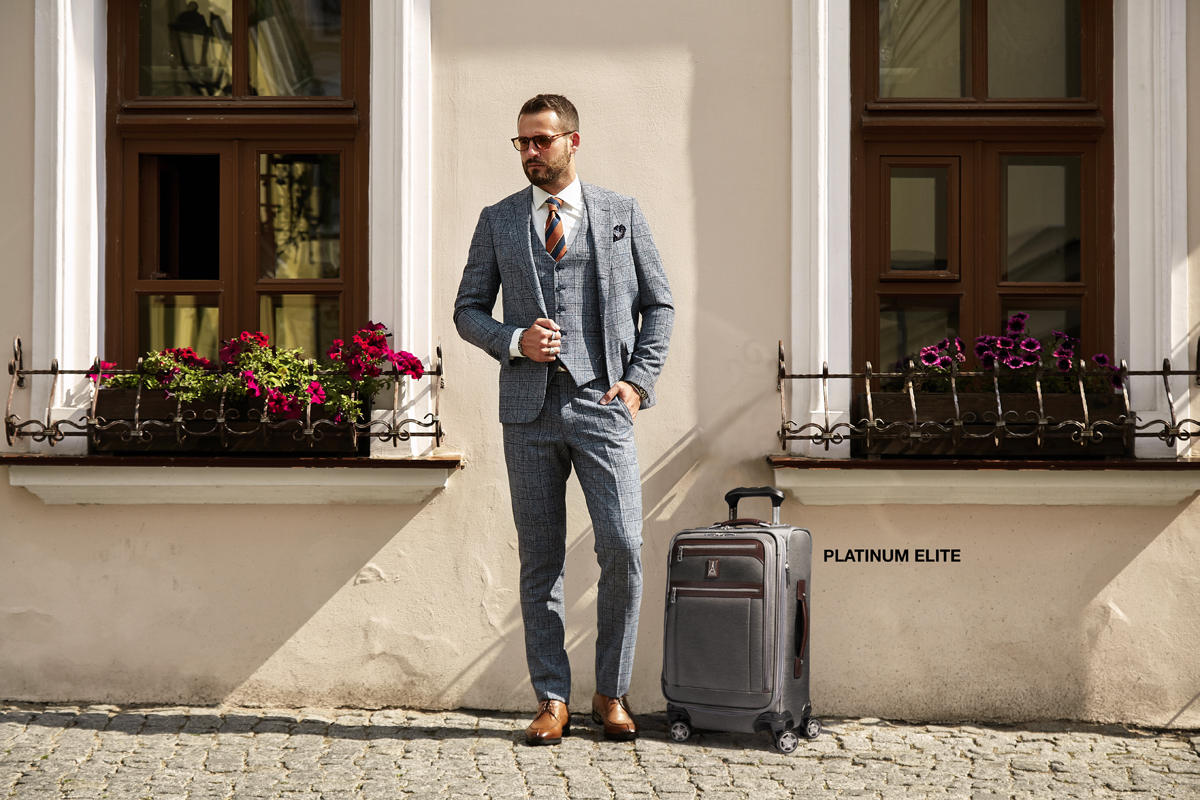
The verdict: My new travel companions
My choice for my new luggage was a matching set of Travelpro Crew 11 two wheelers. They’re the carry-ons most used by airplane crew, with sturdy frames, ballistic nylon fabric and durable ball-bearing wheels.
They’re more feature-filled than my previous bags For instance, there’s a USB charging system in the 21-inch Rollaboard. In the bigger bag there are inner mesh pockets for accessories and even a waterproof pouch for liquids or a wet bathing suit. I opted for the expandable 25-inch rather than the 28-inch, which is so roomy I’d be tempted to over-pack for a cruise and go over airline weight restrictions.
I see no reason why my new companions shouldn’t be just as reliable as my last set. We look forward to many adventures together.

